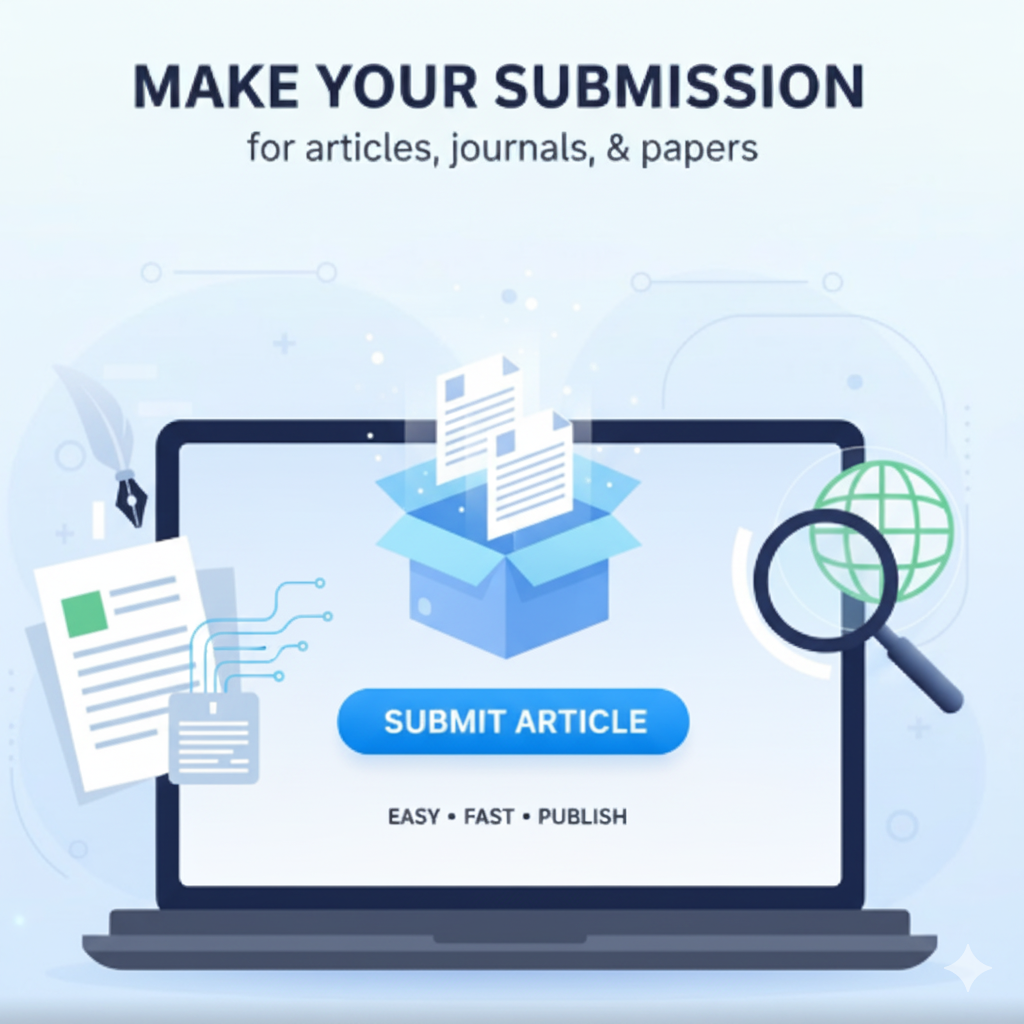Keywords: Academic integrated technology, Instruction, Mathematics education, Programmed learning, TERASI
Abstract
The COVID-19 pandemic has drastically changed the educational landscape, especially regarding technology integration in mathematics learning. Programmed learning, a pedagogical approach that leverages specific technologies such as interactive software, online platforms, and virtual learning environments to create more effective learning experiences, has received increased attention during this period. This research is a systematic literature review that aims to evaluate the impact of programmed learning on mathematics education before and after the pandemic. Using the PRISMA method, this research examines 41 articles published between 1960 and 2025 to find the benefits of programmed learning in mathematics education. Participants in this study included undergraduate students, graduate students, lecturers/teachers, and high school students from various educational institutions. The research results show that programmed learning provides significant benefits, including more exciting and practical teaching approaches, improved academic grades, and increased student interest in mathematics. However, this research also reveals shortcomings in terms of uneven technological infrastructure and a lack of training for teachers in implementing programmed learning optimally. These deficiencies include unequal access to technological tools and a need for more technical skills among educators. This research provides recommendations for improving technology infrastructure and better teacher training to maximize the potential of programmed learning. This research indicates a significant increase in teaching effectiveness and student interest in mathematics, making programmed learning a potential approach in modern mathematics education. Integrating technology in mathematics education through programmed learning is relevant and essential in facing educational challenges in the post-pandemic era, offering practical solutions for educators and institutions.
References
Abed, E. K. (2019). Electronic learning and its benefits in education. Eurasia Journal of Mathematics, Science and Technology Education, 15(3). https://doi.org/10.29333/ejmste/102668 DOI: https://doi.org/10.29333/ejmste/102668
Ait-Bali, Y., Ba-M’hamed, S., Gambarotta, G., Sassoè-Pognetto, M., Giustetto, M., & Bennis, M. (2020). Pre- and postnatal exposure to glyphosate-based herbicide causes behavioral and cognitive impairments in adult mice: evidence of cortical ad hippocampal dysfunction. Archives of Toxicology, 94(5), 1703–1723. https://doi.org/10.1007/s00204-020-02677-7 DOI: https://doi.org/10.1007/s00204-020-02677-7
Alzahrani, K. S., & Alfadhli, E. (2023). The effectiveness of Driver’s model in teaching mathematics for developing intermediate school students conceptual understanding. Eurasia Journal of Mathematics, Science and Technology Education, 19(5). https://doi.org/10.29333/ejmste/13161 DOI: https://doi.org/10.29333/ejmste/13161
Ayivi-Vinz, G., Kanyinga, F. B., Bergeron, L., Décary, S., Adisso, É. L., Zomahoun, H. T. V, Daniel, S. J., Tremblay, M., Plourde, K. V, Guay-Bélanger, S., & Légaré, F. (2022). Use of the CPD-REACTION Questionnaire to Evaluate Continuing Professional Development Activities for Health Professionals: Systematic Review. JMIR Medical Education, 8(2). https://doi.org/10.2196/36948 DOI: https://doi.org/10.2196/36948
Banada, P. P., Huff, K., Bae, E., Rajwa, B., & ... (2009). Label-free detection of multiple bacterial pathogens using light-scattering sensor. Biosensors and …. https://www.sciencedirect.com/science/article/pii/S0956566308005095 DOI: https://doi.org/10.1016/j.bios.2008.08.053
Bondie, R. (2023). Exploring Personalized Learning and Open Education Pedagogy in Multilingual Learner Teacher Preparation. Online Learning Journal, 27(4), 315–347. https://doi.org/10.24059/olj.v27i4.4018 DOI: https://doi.org/10.24059/olj.v27i4.4018
Cholily, Y. M., Darmayanti, R., Lovat, T., Choirudin, C., Usmiyatun, U., & ... (2023). Si-GEMAS: Serious game mathematical crossword puzzle learning media for students critical thinking ability. Al-Jabar: Jurnal Pendidikan Matematika, 14(1), 165–179. DOI: https://doi.org/10.24042/ajpm.v14i1.16113
Clark, T., & Hordosy, R. (2019). Undergraduate experiences of the research/teaching nexus across the whole student lifecycle. Teaching in Higher Education, 24(3), 412–427. https://doi.org/10.1080/13562517.2018.1544123 DOI: https://doi.org/10.1080/13562517.2018.1544123
Clarke, M., & Hennig, B. (2013). Motivation as ethical self-formation. Educational Philosophy and Theory, 45(1), 77–90. https://doi.org/10.1080/00131857.2012.715386 DOI: https://doi.org/10.1080/00131857.2012.715386
Clark-Wilson, A., Robutti, O., & Thomas, M. (2020). Teaching with digital technology. ZDM - Mathematics Education, 52(7), 1223–1242. https://doi.org/10.1007/s11858-020-01196-0 DOI: https://doi.org/10.1007/s11858-020-01196-0
Cossart, P., & Roy, C. R. (2010). Manipulation of host membrane machinery by bacterial pathogens. Current Opinion in Cell Biology. https://www.sciencedirect.com/science/article/pii/S0955067410000694 DOI: https://doi.org/10.1016/j.ceb.2010.05.006
Couch, B. A., Wright, C. D., Freeman, S., Knight, J. K., Semsar, K., Smith, M. K., Summers, M. M., Zheng, Y., Crowe, A. J., & Brownell, S. E. (2019). GenBio-MAPS: A programmatic assessment to measure student understanding of vision and change core concepts across general biology programs. CBE Life Sciences Education, 18(1). https://doi.org/10.1187/cbe.18-07-0117 DOI: https://doi.org/10.1187/cbe.18-07-0117
Curnew, D., Lukewich, J., Mathews, M., Poitras, M.-E., & Romme, K. (2023). Integration of primary care education into undergraduate nursing programs: A scoping review protocol. JBI Evidence Synthesis, 21(7), 1493–1500. https://doi.org/10.11124/JBIES-22-00312 DOI: https://doi.org/10.11124/JBIES-22-00312
Darmayanti, R., Sah, R. W. A., & Azizah, I. N. (2021). Covid-19 Pandemic: Teacher Problems-Early Childhood Learning (PAUD)-The Solution. Jurnal Caksana: Pendidikan Anak Usia Dini, 2, 55–65.
Desmarais, E. E., French, B. F., Ahmetoglu, E., Acar, I., Gonzalez-Salinas, C., Kozlova, E., Slobodskaya, H., Benga, O., Majdandžić, M., Beijers, R., de Weerth, C., Huitron, B., Lee, E. G., Han, S.-Y., Park, S.-Y., Giusti, L., Montirosso, R., Tuovinen, S., Heinonen, K., … Gartstein, M. A. (2021). Cultural contributors to negative emotionality: A multilevel analysis from the Joint Effort Toddler Temperament Consortium. International Journal of Behavioral Development, 45(6), 545 – 552. https://doi.org/10.1177/01650254211020128 DOI: https://doi.org/10.1177/01650254211020128
Dooley, C. M. M. (2011). The emergence of comprehension: A decade of research 2000-2010. International Electronic Journal of Elementary Education, 4(1), 169–184.
Eliks, M., & Gajewska, E. (2022). The Alberta Infant Motor Scale: A tool for the assessment of motor aspects of neurodevelopment in infancy and early childhood. Frontiers in Neurology, 13. https://doi.org/10.3389/fneur.2022.927502 DOI: https://doi.org/10.3389/fneur.2022.927502
Fell Kurban, C. (2019). Designing effective, contemporary assessment on a flipped educational sciences course. Interactive Learning Environments, 27(8), 1143–1159. https://doi.org/10.1080/10494820.2018.1522650 DOI: https://doi.org/10.1080/10494820.2018.1522650
Filho, A. C. V., Tomaz, M. A., Ferrão, R. G., Ferrão, M. A. G., da Fonseca, A. F. A., & Rodrigues, W. N. (2014). Conilon coffee yield using the programmed pruning cycle and different cultivation densities; [Produtividade do cafeeiro conilon conduzido com a poda programada de ciclo e diferentes densidades de cultivo]. Coffee Science, 9(4), 489 – 494. https://www.scopus.com/inward/record.uri?eid=2-s2.0-84907762537&partnerID=40&md5=12a905b1732f7944b5736334e3fd07d9
Fox, D. A., Grandjean, P., De Groot, D., & Paule, M. G. (2012). Developmental origins of adult diseases and neurotoxicity: Epidemiological and experimental studies. NeuroToxicology, 33(4), 810–816. https://doi.org/10.1016/j.neuro.2011.12.016 DOI: https://doi.org/10.1016/j.neuro.2011.12.016
Gómez-García, M., Hossein-Mohand, H., Trujillo-Torres, J. M., & Hossein-Mohand, H. (2020). The training and use of ICT in teaching perceptions of melilla’s (spain) mathematics teachers. Mathematics, 8(10). https://doi.org/10.3390/MATH8101641 DOI: https://doi.org/10.3390/math8101641
Grineski, S. E., Clark-Reyna, S. E., & Collins, T. W. (2016). School-based exposure to hazardous air pollutants and grade point average: A multi-level study. Environmental Research, 147, 164–171. https://doi.org/10.1016/j.envres.2016.02.004 DOI: https://doi.org/10.1016/j.envres.2016.02.004
Hassan, S. A., Khalil, M. A., Auletta, F., Filosa, M., Camboni, D., Menciassi, A., & Oddo, C. M. (2023). Contamination Detection Using a Deep Convolutional Neural Network with Safe Machine—Environment Interaction. Electronics (Switzerland), 12(20). https://doi.org/10.3390/electronics12204260 DOI: https://doi.org/10.3390/electronics12204260
Hilario, L., Mora, M. C., Montés, N., Romero, P. D., & Barquero, S. (2022). Gamification for Maths and Physics in University Degrees through a Transportation Challenge. Mathematics, 10(21). https://doi.org/10.3390/math10214112 DOI: https://doi.org/10.3390/math10214112
Hodges, S. L., Reynolds, C. D., Nolan, S. O., Huebschman, J. L., Okoh, J. T., Binder, M. S., & Lugo, J. N. (2019). A single early-life seizure results in long-term behavioral changes in the adult Fmr1 knockout mouse. Epilepsy Research, 157. https://doi.org/10.1016/j.eplepsyres.2019.106193 DOI: https://doi.org/10.1016/j.eplepsyres.2019.106193
Humaidi, N., Darmayanti, R., & Sugianto, R. (2022). Challenges of Muhammadiyah’s contribution in handling Covid-19 in the MCCC program in Indonesia. Khazanah Sosial, 4(1), 176–186. DOI: https://doi.org/10.15575/ks.v4i1.17201
Hung, C.-K. (2017). Making machine-learning tools accessible to language teachers and other non-Techies: T-SNE-lab and rocanr as first examples. Proceedings - 2017 IEEE 8th International Conference on Awareness Science and Technology, ICAST 2017, 2018-January, 355–358. https://doi.org/10.1109/ICAwST.2017.8256478 DOI: https://doi.org/10.1109/ICAwST.2017.8256478
Justice, L. M., Capps, J., Nielsen, D., Hogan, T., Bridges, M., Justice, L. M., Lomax, R., O’Connell, A., Pentimonti, J., Petrill, S. A., Piasta, S. B., Gray, S., Restrepo, M. A., Cain, K., Catts, H., Catts, H., Bovaird, J., & Ron Nelson, J. (2016). Use of the curriculum research framework (CRF) for developing a reading-comprehension curricular supplement for the primary grades. Elementary School Journal, 116(3), 459–486. https://doi.org/10.1086/684827 DOI: https://doi.org/10.1086/684827
Kirshner, D., & Skinner, K. (2021). The entitled teacher: Perpetrator or victim? In Advances in Research on Teaching (Vol. 38, pp. 103–116). Emerald Group Holdings Ltd. https://doi.org/10.1108/S1479-368720210000038007 DOI: https://doi.org/10.1108/S1479-368720210000038007
Klopfer, E., & Osterweil, S. (2013). The boom and bust and boom of educational games. Lecture Notes in Computer Science (Including Subseries Lecture Notes in Artificial Intelligence and Lecture Notes in Bioinformatics), 7544, 290–296. https://doi.org/10.1007/978-3-642-37042-7_21 DOI: https://doi.org/10.1007/978-3-642-37042-7_21
Königschulte, A., De Araújo, L. M., & Erb, U. (2010). Integrating an educational game in a museum exhibition - Challenges and limitations. 4th European Conference on Games Based Learning 2010, ECGBL 2010, 194–200. https://www.scopus.com/inward/record.uri?eid=2-s2.0-84901745739&partnerID=40&md5=91875d1eb46e768cd97da717872ca757
Koo, K. K., & Jiang, M. (2022). What Does It Mean to Take Online Classes as an International Student During COVID-19? Online Learning Journal, 26(4), 209–230. https://doi.org/10.24059/olj.v26i4.3495 DOI: https://doi.org/10.24059/olj.v26i4.3495
Lemke, F., & Petersen, H. L. (2013). Teaching reputational risk management in the supply chain. Supply Chain Management, 18(4), 413–429. https://doi.org/10.1108/SCM-06-2012-0222 DOI: https://doi.org/10.1108/SCM-06-2012-0222
Makoe, M., & Shandu-Phetla, T. P. (2019). Using Mobile-based Social Media to Facilitate Interaction and Build Communities through the Lens of Ubuntu in Distance Education. Journal of Learning for Development, 6(2), 130–142. https://doi.org/10.56059/jl4d.v6i2.357 DOI: https://doi.org/10.56059/jl4d.v6i2.357
Màrquez, L., Recasens, M., & Sapena, E. (2013). Coreference resolution: An empirical study based on SemEval-2010 shared Task 1. Language Resources and Evaluation, 47(3), 661–694. https://doi.org/10.1007/s10579-012-9194-z DOI: https://doi.org/10.1007/s10579-012-9194-z
Martínez-Borreguero, G., Perera-Villalba, J. J., Mateos-Núñez, M., & Naranjo-Correa, F. L. (2020). Development of ICT-based didactic interventions for learning sustainability content: Cognitive and affective analysis. Sustainability (Switzerland), 12(9). https://doi.org/10.3390/su12093644 DOI: https://doi.org/10.3390/su12093644
Martínez-Moreno, A., Giménez, S. I., & Suárez, A. D. (2020). The psychomotor profile of pupils in early childhood education. Sustainability (Switzerland), 12(6). https://doi.org/10.3390/su12062564 DOI: https://doi.org/10.3390/su12062564
Moreno-Guerrero, A.-J., García, M. R., Heredia, N. M., & Rodríguez-García, A.-M. (2020). Collaborative learning based on harry potter for learning geometric figures in the subject of mathematics. Mathematics, 8(3). https://doi.org/10.3390/math8030369 DOI: https://doi.org/10.3390/math8030369
Muhammad, I., Darmayanti, R., & Sugianto, R. (2023). Teori Vygotsky: Kajian bibliometrik penelitian cooperative learning di sekolah dasar (1987-2023). Bulletin of Educational Management and Innovation, 2, 81–98. DOI: https://doi.org/10.56587/bemi.v1i2.78
Nagi, K. (2016). Quality of MBA programs-challenges for Thai universities in the new ASEAN economic community (AEC). Indian Journal of Science and Technology, 9(46). https://doi.org/10.17485/ijst/2016/v9i46/107308 DOI: https://doi.org/10.17485/ijst/2016/v9i46/107308
Nambiar, R. M. K., Nor, N. M., Ismail, K., & Adam, S. (2017). New learning spaces and transformations in teacher pedagogy and student learning behavior in the language learning classroom. 3L: Language, Linguistics, Literature, 23(4), 29–40. https://doi.org/10.17576/3L-2017-2304-03 DOI: https://doi.org/10.17576/3L-2017-2304-03
Nikolic, B., Trnski-Levak, S., Kosic, K., Drlje, M., Banovac, I., Hranilovic, D., & Jovanov-Milosevic, N. (2023). Lasting mesothalamic dopamine imbalance and altered exploratory behavior in rats after a mild neonatal hypoxic event. Frontiers in Integrative Neuroscience, 17. https://doi.org/10.3389/fnint.2023.1304338 DOI: https://doi.org/10.3389/fnint.2023.1304338
Ozdemir, D. (2022). An Examination of Students’ Views about an International Math Contest. International Electronic Journal of Mathematics Education, 17(2). https://doi.org/10.29333/iejme/11817 DOI: https://doi.org/10.29333/iejme/11817
Pérez-Sabater, C. (2015). Discovering language variation in WhatsApp text interactions. Onomazein, 31(1), 113–126. https://doi.org/10.7764/onomazein.31.8 DOI: https://doi.org/10.7764/onomazein.31.8
Raza, S. H., & Reddy, E. (2021). Intentionality and Players of Effective Online Courses in Mathematics. Frontiers in Applied Mathematics and Statistics, 7. https://doi.org/10.3389/fams.2021.612327 DOI: https://doi.org/10.3389/fams.2021.612327
Rizqi, P. A. D., Darmayanti, R., Sugianto, R., Choirudin, C., & Muhammad, I. (2023). Problem Solving Analysis Through Tests in View Of Student Learning Achievement. Indonesian Journal of Learning and Educational Studies, 1(1), 53–63. DOI: https://doi.org/10.62385/ijles.v1i1.26
Roels, H. A., Bowler, R. M., Kim, Y., Claus Henn, B., Mergler, D., Hoet, P., Gocheva, V. V, Bellinger, D. C., Wright, R. O., Harris, M. G., Chang, Y., Bouchard, M. F., Riojas-Rodriguez, H., Menezes-Filho, J. A., & Téllez-Rojo, M. M. (2012). Manganese exposure and cognitive deficits: A growing concern for manganese neurotoxicity. NeuroToxicology, 33(4), 872–880. https://doi.org/10.1016/j.neuro.2012.03.009 DOI: https://doi.org/10.1016/j.neuro.2012.03.009
Rosillo, N., & Montes, N. (2021). Escape room dual mode approach to teach maths during the covid-19 era. Mathematics, 9(20). https://doi.org/10.3390/math9202602 DOI: https://doi.org/10.3390/math9202602
Rustan, E. (2022). Language Learning With Neurolinguistic Programming: An Integrative Review. Journal of Language Teaching and Research, 13(6), 1251–1258. https://doi.org/10.17507/jltr.1306.13 DOI: https://doi.org/10.17507/jltr.1306.13
Sharafeeva, L. (2022). The Study of Teaching Staff Motivation to Use Mobile Technologies in Teaching Mathematics. International Journal of Education in Mathematics, Science and Technology, 10(3), 604–617. https://doi.org/10.46328/ijemst.2364 DOI: https://doi.org/10.46328/ijemst.2364
Sikarwar, A., Rani, R., Duthé, G., & Golaz, V. (2023). Association of greenness with COVID-19 deaths in India: An ecological study at district level. Environmental Research, 217. https://doi.org/10.1016/j.envres.2022.114906 DOI: https://doi.org/10.1016/j.envres.2022.114906
Sim, J., Mcgoverin, C., Oey, I., Frew, R., & Kebede, B. (2023). Stable isotope and trace element analyses with non-linear machine-learning data analysis improved coffee origin classification and marker selection. Journal of the Science of Food and Agriculture, 103(9), 4704 – 4718. https://doi.org/10.1002/jsfa.12546 DOI: https://doi.org/10.1002/jsfa.12546
Sirola, M., & Hulsund, J. E. (2021). Machine-Learning Methods in Prognosis of Ageing Phenomena in Nuclear Power Plant Components. International Journal of Computing, 20(1), 11 – 21. https://doi.org/10.47839/ijc.20.1.2086 DOI: https://doi.org/10.47839/ijc.20.1.2086
Sudakov, I., Bellsky, T., Usenyuk, S., & Polyakova, V. V. (2016). Infographics and Mathematics: A Mechanism for Effective Learning in the Classroom. PRIMUS, 26(2), 158–167. https://doi.org/10.1080/10511970.2015.1072607 DOI: https://doi.org/10.1080/10511970.2015.1072607
Sudiana, I. K., Swadesi, I. K. I., Artanayasa, I. W., Ariani, N. L. P. T., Kusuma, K. C. A., & Sumadita, I. W. (2023). Plyometric Stair Jump and Reaction Box Jump to Improve the Frequency of Straight-forward Kicks in Pencak Silat Athletes. International Journal of Human Movement and Sports Sciences, 11(1), 162–169. https://doi.org/10.13189/saj.2023.110119 DOI: https://doi.org/10.13189/saj.2023.110119
Vernon, T. W., Koegel, R. L., Dauterman, H., & Stolen, K. (2012). An early social engagement intervention for young children with autism and their parents. Journal of Autism and Developmental Disorders, 42(12), 2702–2717. https://doi.org/10.1007/s10803-012-1535-7 DOI: https://doi.org/10.1007/s10803-012-1535-7
Wang, X., & Yuan, L. (2023). Machine-learning based automatic assessment of communication in interpreting. Frontiers in Communication, 8. https://doi.org/10.3389/fcomm.2023.1047753 DOI: https://doi.org/10.3389/fcomm.2023.1047753
Wildsmith, R. (2013). The African languages in South African education 2009-2011. Language Teaching, 46(1), 120–124. https://doi.org/10.1017/S0261444812000420 DOI: https://doi.org/10.1017/S0261444812000420
Wirawan, R., McIntyre-Mills, J. J., Riswanda, R., Widianingsih, I., & Gunawan, I. (2023). Pathways to well-being in Tarumajaya, West Java: Post-COVID 19 supporting better access to the commons through engagement and a critical systemic reflection on stories. Systems Research and Behavioral Science. https://doi.org/10.1002/sres.2983 DOI: https://doi.org/10.1002/sres.2983
Wray, J., Brown, K. L., Ridout, D., Lakhanpaul, M., Smith, L., Scarisbrick, A., O’Curry, S., & Hoskote, A. (2018). Development and preliminary testing of the Brief Developmental Assessment: An early recognition tool for children with heart disease. Cardiology in the Young, 28(4), 582–591. https://doi.org/10.1017/S1047951117002918 DOI: https://doi.org/10.1017/S1047951117002918
Yushau, B. (2006). Computer attitude, use, experience, software familiarity and perceived pedagogical usefulness: The case of mathematics professors. Eurasia Journal of Mathematics, Science and Technology Education, 2(3), 1–17. https://doi.org/10.12973/ejmste/75461 DOI: https://doi.org/10.12973/ejmste/75461

Downloads
Published
How to Cite
Issue
Section
License
Copyright (c) 2024 Rani Darmayanti

This work is licensed under a Creative Commons Attribution-ShareAlike 4.0 International License.
 https://doi.org/10.61650/alj.v2i1.126
https://doi.org/10.61650/alj.v2i1.126







